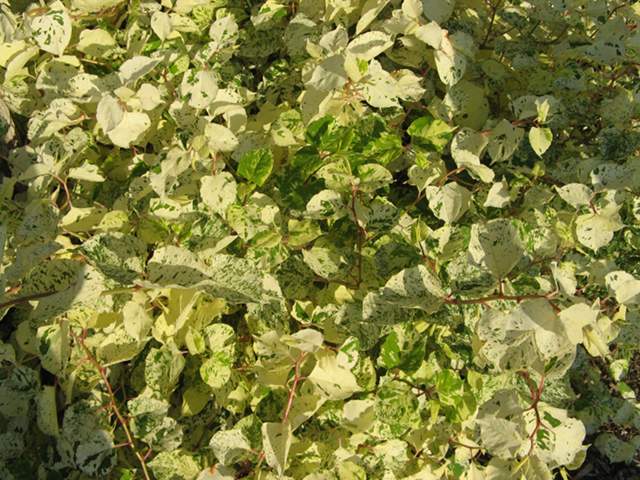Variegated Japanese Knotweed in album plants

Jun 10th, 2006, by Alex Zorach
This is variegated Japanese knotweed. Japanese knotweed goes by several different scientific names: Fallopia japonica, Polygonum cuspidatum, and Reynoutria japonica. It is native to Asia, and is in the Polygonacea family, which also contains some food crops including buckwheat and rhubarb.
Japanese knotweed has become a devastating invasive plant in numerous areas where it has been introduced. It grows extremely vigorously, mainly spreading vegetatively by underground runners. This plant stores most of its energy in its root system, and invests less energy in the maintenance in the above-ground structure, which consists of hollow stems (almost bamboo-like) with numerous leaves attached to them.
The variegated form of this plant is occasionally planted as a landscaping plant, because of its interesting-looking foliage. The variegated form is much less vigorous, due to its greatly-impeded ability to capture energy from sunlight. However, it is still a vigorous grower, as this photo shows. My personal recommendation is to never plant this plant, even in the variegated form. Variegated plants can easily revert back to a fully-green variety (and often, are more likely to do so when placed under conditions where they are energy-limited or facing competition through shading by other plants), and due to the fact that Japanese knotweed is so difficult to remove, I think it is not worth taking any risks with this plant.